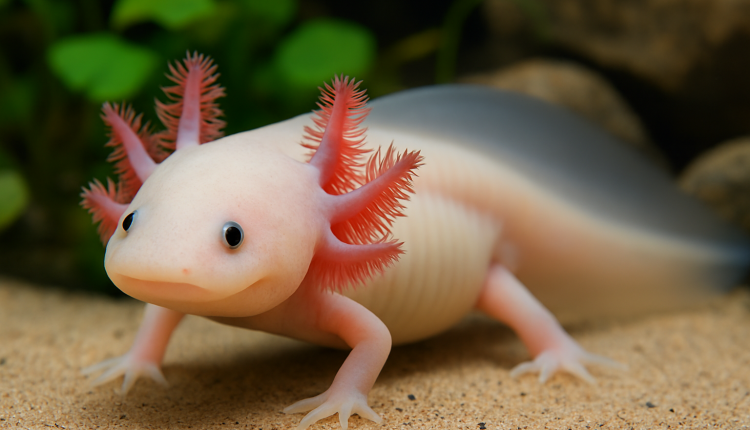Keeping Axolotls as Pets: A Unique Dive into Aquatic Companionship
In the ever-growing world of exotic pet ownership, few animals stand out as much as the axolotl. With its permanent smile, feathery gills, and almost mythical appearance, the axolotl has gained popularity not only among exotic animal enthusiasts but also among casual pet lovers intrigued by its unique charm. Native to a single lake system in Mexico, this unusual amphibian offers a blend of tranquility, curiosity, and ease of care—provided the owner understands its very specific needs.
Unlike reptiles or mammals, axolotls live entirely in water. Despite being amphibians, they remain in their larval stage for life—a condition known as neoteny—which gives them their signature external gills and a fish-like appearance. This trait, along with their peaceful demeanor, makes them an appealing choice for those looking for a low-maintenance but fascinating pet.
What Makes Axolotls Special?
Axolotls (Ambystoma mexicanum) are part of the salamander family but diverge from the typical amphibian lifecycle by skipping the metamorphosis phase. Instead of developing lungs and moving onto land like most salamanders, axolotls remain aquatic and breathe through both gills and skin.
Their gills resemble delicate feathers, extending like a halo around their heads. Their colors can range from wild-type (dark with speckles), to leucistic (pale pink with red gills), albino, golden, and melanoid (very dark). Each morph offers a unique aesthetic appeal to owners.
What truly fascinates scientists—and indirectly pet owners—is the axolotl’s ability to regenerate not just limbs, but also spinal cord, heart, and even parts of its brain. While this doesn’t affect their day-to-day life as pets, it certainly adds to their allure.
Setting Up the Perfect Habitat
Despite being low-energy and relatively easy to keep, axolotls have very specific environmental needs. The most important factor? Temperature. Axolotls thrive in cooler waters, ideally between 16°C and 18°C (60°F to 64°F). Temperatures above 22°C (72°F) can cause significant stress and even death, making them unsuitable for traditional tropical aquarium setups.
A standard 20-gallon tank is recommended for a single axolotl, though larger tanks offer more swimming room and easier maintenance. Bare-bottom tanks or tanks with fine sand are preferred, as gravel can be accidentally ingested during feeding, leading to dangerous blockages.
Filtration is necessary to maintain clean water, but the flow must be gentle. Axolotls are sensitive to strong currents, which can cause them to stop eating or become stressed. Sponge filters or adjustable-flow filters are popular choices.
Lighting should be minimal, as axolotls do not have eyelids and prefer dim environments. Decorations should include caves, plants (real or artificial), and other hiding spots to mimic their natural habitat and provide a sense of security.
Feeding Your Axolotl
Axolotls are carnivorous and prefer a diet rich in protein. In captivity, they commonly eat:
- Earthworms (the gold standard for nutrition)
- Bloodworms (frozen or live)
- Sinking salmon pellets or axolotl-specific pellets
- Occasional treats like brine shrimp or blackworms
Feeding is typically done every two to three days for adults, while juveniles may require daily feeding. It’s important not to overfeed, as uneaten food can degrade water quality quickly.
Axolotls locate food primarily by smell and movement, so feeding tongs or a turkey baster can help deliver food directly to them without clouding the tank.
Handling and Interaction
Axolotls are not meant to be handled frequently. Their skin is extremely sensitive, and the protective mucus layer can be easily damaged by human touch. They should be admired through the glass, not cuddled or played with. If handling is necessary—for example, during tank cleanings or health checks—it should be brief and done with wet hands or a soft net.
That said, axolotls are far from boring. They often recognize feeding times, may follow fingers along the glass, and exhibit quirky behavior like floating motionlessly or walking along the bottom of the tank like underwater puppies.
Common Health Considerations
Most health issues in axolotls stem from improper tank conditions—particularly temperature and water quality. Signs of illness include:
- Loss of appetite
- Curled gills or tail
- Floating and inability to sink
- Skin lesions or fungal infections
Regular water testing and partial water changes can prevent the majority of these problems. It’s advisable to invest in a quality test kit for ammonia, nitrite, nitrate, and pH. Axolotls prefer a pH around 7.4–7.6.
Legal and Ethical Considerations
While axolotls are legal to own in many countries, they are banned in some U.S. states like California and New Jersey due to their endangered status in the wild. Always check your local regulations before acquiring one.
Ethically, it’s important to source axolotls from reputable breeders. Never take them from the wild—especially considering their critically endangered status in their native habitat, Lake Xochimilco, due to pollution, invasive species, and urban expansion.
Is an Axolotl Right for You?
Axolotls are best suited for those looking for a quiet, low-maintenance pet that thrives on observation rather than interaction. They’re excellent pets for older children, students, or adults who can commit to maintaining a consistent tank environment.
They can live for 10 to 15 years with proper care, making them a long-term commitment. Their peaceful, almost meditative presence makes them ideal for anyone looking to bring a bit of the aquatic world into their home—without the noise or demands of more high-maintenance pets.
Final Thoughts
Axolotls offer a unique pet experience: a blend of science, serenity, and subtle wonder. Their care requirements are specific but manageable, and their strange beauty is unlike anything else you’ll find in the pet world.
For those who take the time to create the right environment and respect their aquatic boundaries, axolotls reward their owners with years of quiet companionship and captivating behavior—making them a truly extraordinary addition to the realm of exotic animal care.

